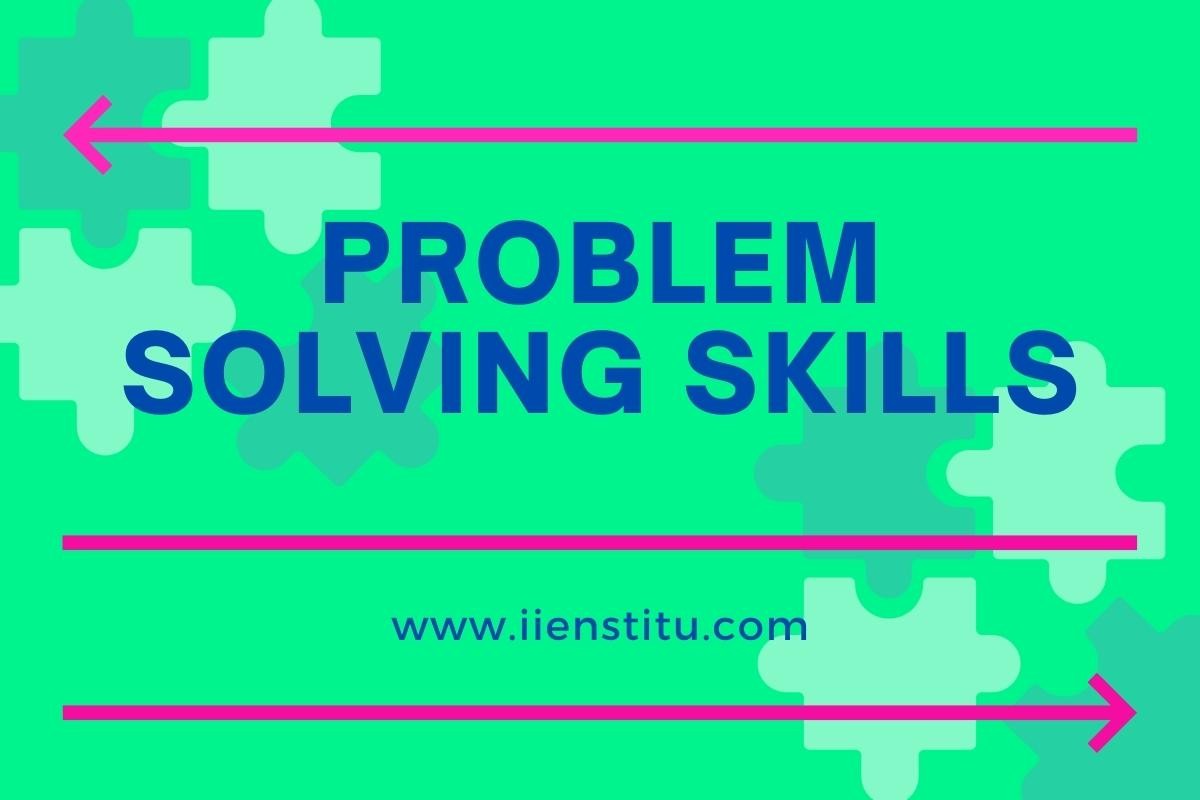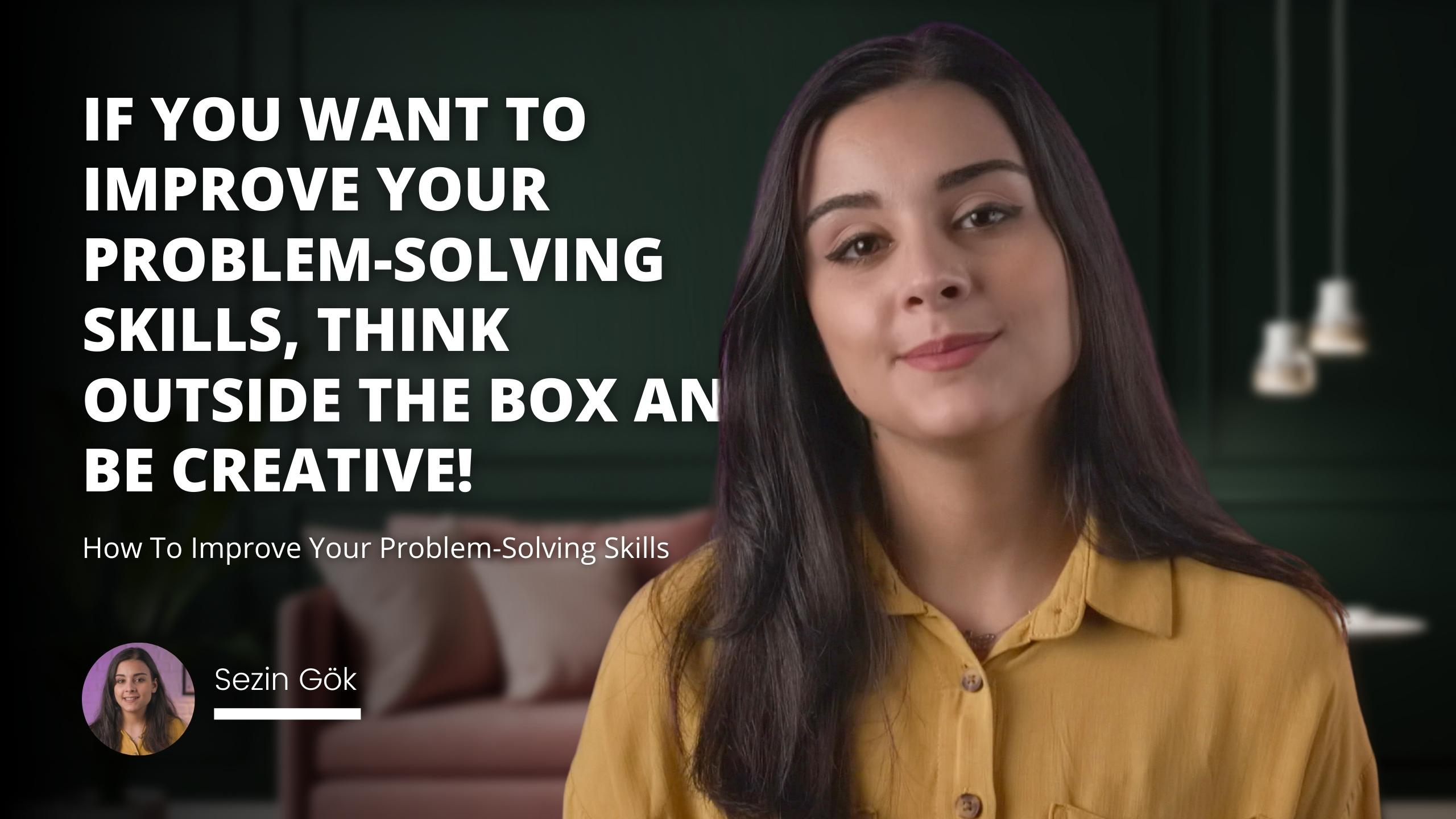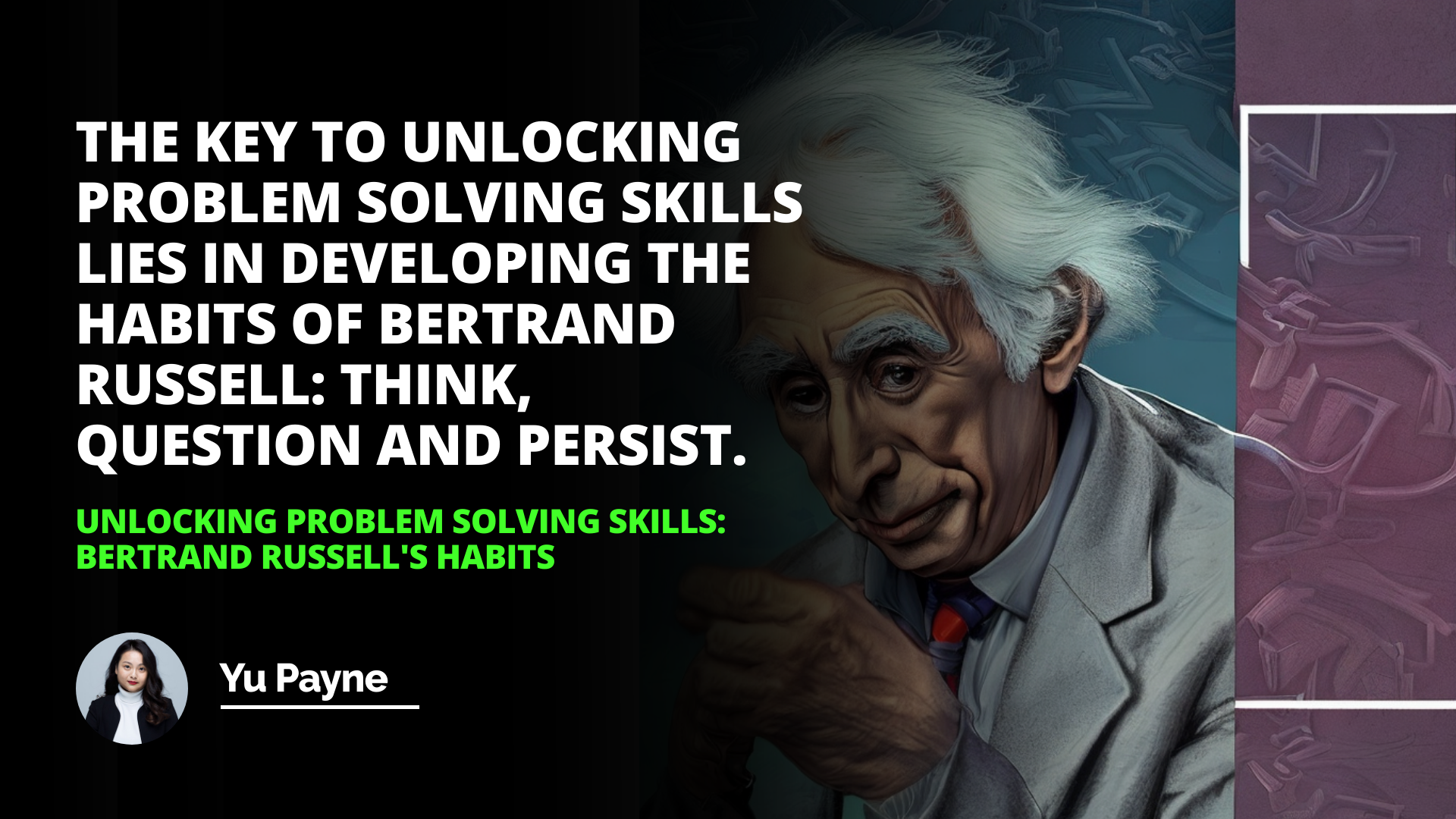
As I sat in my favorite corner of the local coffee shop, sipping on a warm cup of Earl Grey, I couldn't help but overhear a lively debate at the next table. A group of college students were passionately discussing the essence of critical thinking and how it applies to everyday life. It reminded me of my own journey through understanding the profound insights of Bertrand Russell, the British philosopher who has been a guiding light for many when it comes to fostering a deeper level of thought.
Introduction
Critical Thinking
Establishing Useful Habits
How do you imagine it to be
Challenging Assumptions
Embracing the Wisdom of Bertrand Russell
Bertrand Russell wasn't just any philosopher; he was a pioneer in articulating the nuances of critical thinking. His ideas have shaped the way we approach problems, question our surroundings, and challenge the status quo. Russell believed that at the heart of critical thinking lies the search for impartial solutions and the identification and questioning of assumptions. It's not about taking things at face value but digging deeper to uncover the truths that may not be immediately apparent.
İnspiring Films About Life Coaching And Personal Transformation
Quantitative Analysis İn Data-driven Decision-making Strategies
Practical Techniques İn Descriptive Statistics For Data Analysis
I remember the first time I delved into Russell's works during my university days. It was like opening a door to a room filled with endless possibilities. His emphasis on establishing useful habits greatly resonated with me, and I began to see how these habits could transform not just my academic pursuits but my everyday decisions.
Establishing Useful Habits: The Building Blocks of Thought
Russell didn't stop at urging people to think critically; he provided a roadmap of habits that one could adopt to enhance their thinking process. Let's explore these habits, shall we?
1. The Habit of Weighing Evidence
One of Russell's foremost teachings is the importance of weighing evidence before arriving at a conclusion. This means:
Total Productive Maintenance Strategies For Boosting Manufacturing Productivity
Collaborative İnsights For Actionable Solutions With World Café Method
Considering multiple perspectives: Don't limit yourself to a single viewpoint. Embrace the diversity of opinions.
Evaluating the reliability of sources: Not all information is created equal. Assess the credibility of where your information comes from.
Being open to changing your mind: If new evidence presents itself, allow yourself the flexibility to adjust your stance.
Kano Model: A Comprehensive Approach for Enhancing Customer Satisfaction
Failure Modes, Effects, and Criticality Analysis (FMECA): An Insightful Review
I recall a time when I was convinced about a particular health supplement's benefits. I had read glowing reviews and was ready to jump on the bandwagon. However, by applying Russell's principle and weighing the evidence, I discovered conflicting studies that highlighted potential side effects. This led me to make an informed decision, saving me from possible harm.
2. Seeing Reality As It Is
Russell emphasized seeing reality as it truly is, rather than how we imagine it to be. This requires us to:
Acknowledge our biases: We all have preconceived notions. Recognizing them is the first step towards impartiality.
Face uncomfortable truths: Sometimes, the reality isn't what we want it to be, but accepting it is crucial.
Avoid wishful thinking: Decisions should be based on facts, not on how we wish things would turn out.
It's like when a friend is in denial about a toxic relationship. They may imagine it to be perfect, but the reality is far from it. By seeing reality as it is, they can make decisions that are healthier for them in the long run.
The key to unlocking problem-solving skills lies in developing the habits of Bertrand Russell: think, question, and persist.
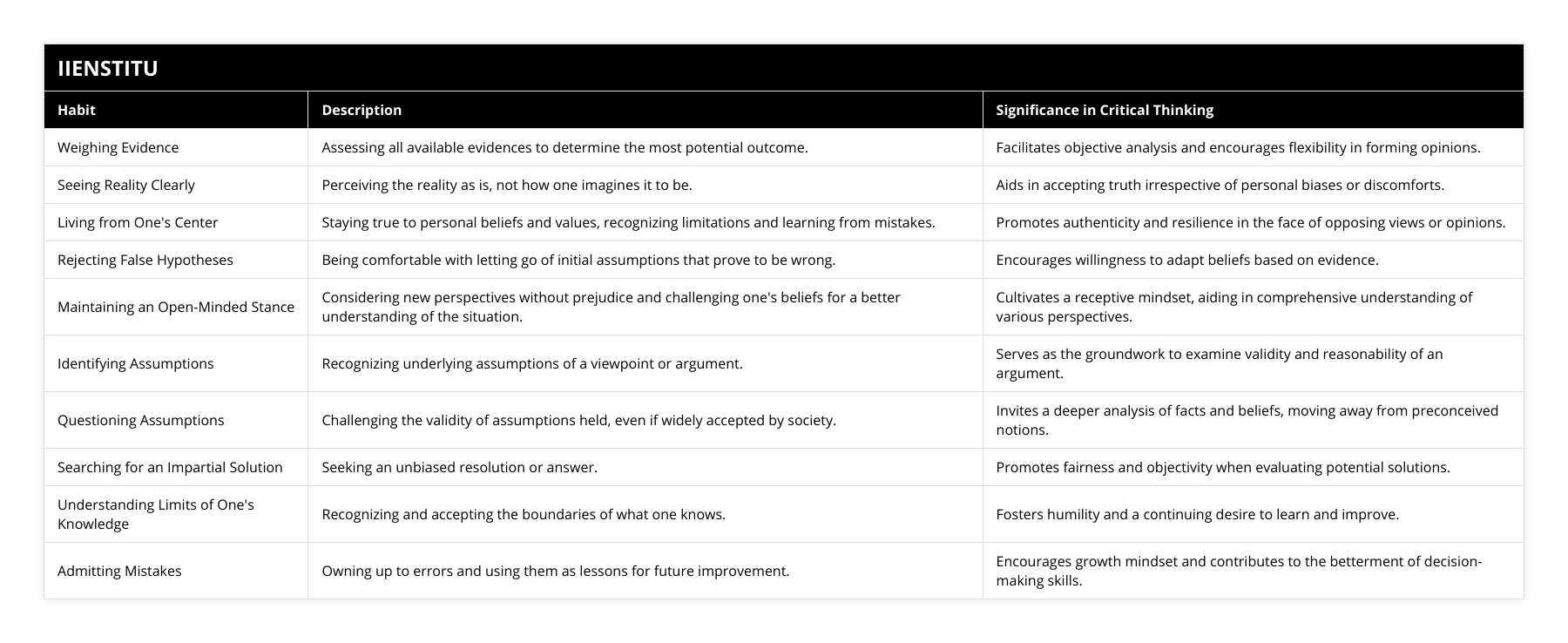
3. Living From One's Center
To live from one's center means to:
1- Stay true to your values and beliefs: Don't let external pressures sway you from what you hold dear.
2- Recognize your limitations: Understand that it's okay not to know everything.
3- Be willing to learn and grow: Embrace mistakes as learning opportunities.
When I decided to switch careers from finance to art, many thought I was making a grave mistake. But by living from my center, I honored my passion and have never looked back since.
4. Rejecting False Hypotheses
Critical thinking involves the ability to reject hypotheses that prove to be false. This habit encourages:
Continuous testing of ideas: Don't accept conclusions without rigorous examination.
Letting go of disproven beliefs: It's okay to admit when something isn't correct.
Seeking the truth above all: Prioritize accuracy over being right.
In scientific research, this is paramount. A researcher must be willing to discard a hypothesis if the data doesn't support it, no matter how attached they might be to their initial idea.
5. Maintaining Open-Mindedness
Lastly, Russell champions the stance of open-mindedness. This entails:
Welcoming new ideas: Even if they contradict your own.
Engaging in active listening: Truly hear what others are saying without planning your rebuttal.
Avoiding prejudgment: Give concepts a fair chance before forming an opinion.
This reminds me of a time when I was skeptical about meditation. It sounded like hocus-pocus to me. However, after attending a workshop with an open mind, I found it incredibly beneficial for my mental health.
Challenging Assumptions: The Heart of Progress
At the core of Russell's philosophy is the courage to challenge assumptions. Assumptions can be like invisible chains, holding us back from discovering new truths. By questioning what's often taken for granted, we pave the way for innovation and deeper understanding.
Consider the way technology has evolved. If inventors hadn't challenged the assumption that long-distance communication required physical mail, we might not have the instant connectivity we enjoy today.
Applying Critical Thinking in Everyday Life
You might be wondering, how does all this relate to our daily grind? Well, critical thinking isn't just for philosophers or academics; it's a tool we can all use. Whether you're drafting a reassignment request letter at work and need tips and information on presenting your case effectively, or you're making a significant life decision, these habits are invaluable.
Practical Steps to Enhance Your Critical Thinking
1- Ask Questions: Don't accept information passively.
2- Reflect on Your Thought Process: Be aware of how you arrive at conclusions.
3- Seek Diverse Perspectives: Engage with people who challenge your viewpoints.
4- Practice Problem-Solving: Tackle puzzles or situations that make you think differently.
5- Stay Informed: Keep learning about the world around you.
The Journey Towards Better Thinking
Embracing Bertrand Russell's teachings isn't an overnight transformation. It's a journey of continuous improvement, much like honing any other skill. There will be times when it's easier to go with the flow, to accept things as they are, but remember that progress often comes from those who dare to think differently.
I often find myself reflecting on a quote by Russell from his book "The Problems of Philosophy":
"The point of philosophy is to start with something so simple as not to seem worth stating, and to end with something so paradoxical that no one will believe it."
This encapsulates the essence of critical thinking—starting with the basics and venturing into the complex, all while remaining open to wherever the journey takes you.
Conclusion: Unlocking Your Problem-Solving Potential
In wrapping up, the insights of Bertrand Russell offer a treasure trove of wisdom for anyone looking to enhance their critical thinking skills. By searching for impartial solutions, identifying and questioning assumptions, and establishing beneficial habits, we equip ourselves to tackle challenges more effectively.
Remember:
Think deeply and deliberately.
Question everything, especially your own beliefs.
Persist in seeking the truth, even when it's uncomfortable.
The key to unlocking your problem-solving skills lies in adopting these habits and integrating them into your daily life. Whether you're dealing with complex work projects, personal relationships, or drafting that crucial reassignment request letter, these principles can guide you towards better outcomes.
So next time you find yourself faced with a dilemma, channel your inner Bertrand Russell. Take a step back, weigh the evidence, challenge your assumptions, and embrace the journey towards clearer, more effective thinking.
References
1- Russell, B. (1912). The Problems of Philosophy. Oxford University Press.
2- Russell, B. (1945). A History of Western Philosophy. Simon & Schuster.
3- Russell, B. (1927). An Outline of Philosophy. Routledge.
4- Dewey, J. (1933). How We Think. D.C. Heath and Company.
5- Ennis, R. H. (1996). Critical Thinking. Prentice Hall.
Frequently Asked Questions
What are the key factors that contribute to climate change?
Key Factors Contributing to Climate Change
There are several key factors that contribute significantly to climate change. The most significant is the burning of fossil fuels such as coal, oil and natural gas. When fossil fuels are burned, they release greenhouse gases like carbon dioxide and methane into the atmosphere. These greenhouse gases trap heat from the sun, causing global temperatures to rise.
Deforestation is another major factor. Trees absorb and store carbon dioxide. When forests are cleared, that stored carbon is released. Deforestation also reduces the number of trees available to remove carbon dioxide from the air. Between 2015 and 2020, the world lost over 4 million hectares of forest per year.
Intensive livestock farming generates significant greenhouse gas emissions. Cows and sheep produce methane as part of their digestive process. Large scale cattle ranching leads to deforestation too. The livestock sector accounts for around 15% of global emissions.
Other contributors are fertilizers containing nitrogen and the burning of biomass. Overall, human activities are responsible for almost all of the increase in greenhouse gases over the last century. To mitigate climate change, we must transition from fossil fuels to renewable energy and prevent further deforestation. We must also reduce emissions from agriculture and other sources.
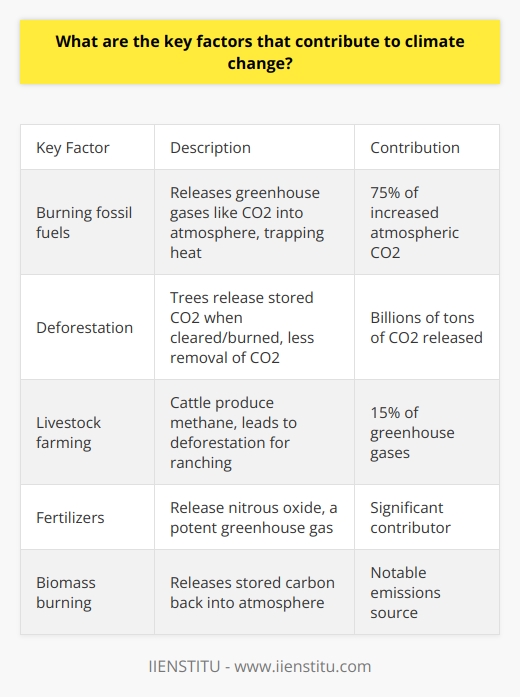
How does gender inequality manifest in different cultures?
Manifestations of Gender Inequality
Gender inequality refers to unequal treatment or perceptions of individuals based on their gender. This manifests in various ways across cultures. In many cultures, traditional gender roles cast women as caregivers and men as leaders. This leads to inequalities in domestic duties, employment, and positions of authority. For example, in parts of South Asia, women spend much more time on unpaid domestic work than men. In Saudi Arabia, strict laws prohibit women from traveling or working without a male guardian's permission.
Gender discrimination in education also perpetuates inequality. In Afghanistan, girls face barriers to attending school including lack of facilities, child marriage, and Taliban restrictions. Only 37% of Afghan girls complete primary education, compared to 66% of boys. This lack of education limits women's ability to participate in society.
Violence against women is another manifestation of gender inequality. Practices like female genital mutilation in parts of Africa, acid attacks in Southeast Asia, and honor killings in the Middle East target and control women. Up to 38% of murders of women worldwide are committed by intimate partners. Laws and enforcement often fail to protect women.
While many cultures have embedded gender inequalities, increased education for women and girls, activism, and legal protections are working to promote equal rights. Achieving gender equality requires changing long-held biases and practices.
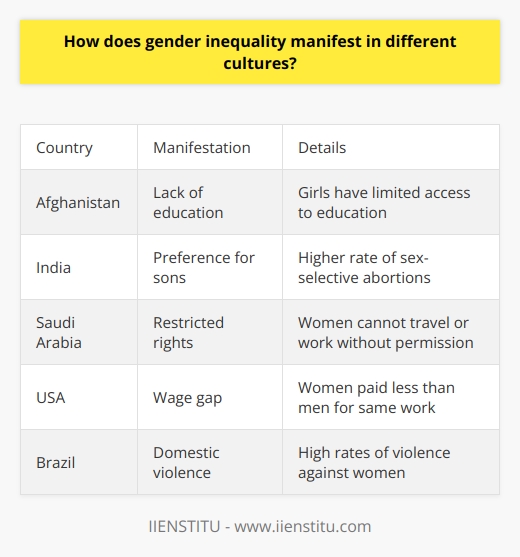
What policies can governments implement to reduce poverty?
Policies to Reduce Poverty
Governments can implement several policies to help reduce poverty. One important policy is to increase access to education. Governments can make primary and secondary education free and compulsory. They can also provide subsidies and scholarships to help low-income students attend college or vocational schools. Education gives people the skills needed to obtain better-paying jobs.
Another policy is to create more jobs and improve wages. Governments can invest in infrastructure and green technology to create construction and manufacturing jobs. They can set higher minimum wages and strengthen unions to improve pay. Policies that support small businesses can also lead to more job creation.
Governments can also strengthen social safety net programs. They can provide cash assistance, food stamps, and housing vouchers to help families meet their basic needs. Healthcare subsidies can make insurance more affordable. Increasing funding for childcare, disability, and unemployment benefits further aids those struggling financially.
Lastly, governments can reform tax policies to ease the burden on lower-income households. They can make tax systems more progressive by increasing taxes on the wealthy. Tax credits like the Earned Income Tax Credit can supplement wages for workers. Reducing regressive payroll and sales taxes helps increase take-home pay.
Implementing a mix of education, job creation, safety net, and tax reform policies can significantly reduce poverty. A comprehensive approach addresses both the symptoms and root causes of financial hardship for low-income families and individuals.

What is the critical theory of Bertrand Russell?
Bertrand Russell's Critical Theory
Bertrand Russell was a British philosopher, logician, mathematician, historian, writer and social critic who is considered to be one of the founders of analytic philosophy. Russell's critical theory focused on using logic and reason to critique traditional philosophy, religion, politics and social conventions.
Critique of Traditional Philosophy
Russell believed that traditional philosophy often relied too much on grandiose metaphysical systems and not enough on logic and empirical evidence. He used logical analysis to break down philosophical problems into smaller components and dismiss what could not be proven logically. Russell rejected the idealism and grand syntheses of figures like Hegel in favor of the new analytic and scientific approach of figures like Frege, which focused on logic and language.
Critique of Religion
Russell was a prominent atheist who believed religion was based on unsupported dogma. He argued that religions make unprovable claims about ethics and the divine which serve to control people. Russell thought religion would gradually fade as society became more scientific, skeptical and secular. He was a vocal critic of organized religion and authored the 1927 book Why I Am Not a Christian.
Critique of Politics and Society
Russell's political views changed over time, but he was generally critical of power structures that limited freedom and perpetuated inequality. He advocated for democratic socialism, feminism, and sexual freedom. During World War I, Russell was a pacifist who criticized militarism. In the 1950s and 1960s, he protested nuclear weapons and the Vietnam War and advocated for nuclear disarmament.
Russell's critical theory used logic, science and rationality to challenge traditional dogmas and irrational conventions across philosophy, religion, politics and society. He helped develop analytic philosophy and believed social progress required free thought, empiricism and democratic reforms. Russell's wide-ranging social criticism and call for intellectual clarity influenced generations of philosophers, activists and skeptics.
What were John Dewey's main contributions to education theory?
John Dewey (1859-1952) was an influential American philosopher and education reformer. His ideas and writings on education have had a profound impact on education theory and practice. Dewey's main contributions to education theory focused on moving away from traditional teacher-centered approaches and embracing student-centered, experiential learning. Some of his key ideas and contributions include:
Progressive Education
Dewey was a leading figure in the progressive education movement. He criticized traditional education for focusing too much on rote learning and memorization. Dewey advocated for active, experiential, hands-on learning that engaged students' interests and natural instincts to investigate and create. His lab school at the University of Chicago implemented progressive ideals.
Pragmatism and Learning by Doing
Dewey's pragmatist philosophy emphasized learning by doing. He believed education should be relevant to real-life and help students develop practical problem-solving skills. Dewey promoted learning through projects and activities that applied knowledge, rather than passive absorption of subjects.
Child-Centered Education
Dewey argued against authoritarian teaching methods. He believed education should be child-centered, tailored to students' unique interests and development. Dewey advocated for active participation in learning to make school engaging and enjoyable for children.
Democracy and Education
Dewey believed schools should teach democratic values and help students develop skills to meaningfully participate in society. He saw education as crucial for maintaining a democratic way of life. Dewey emphasized cultivating students' social skills, creativity, independence, and civic awareness.
In summary, John Dewey pushed for progressive, pragmatic, child-centered education that focused on real-life skills, hands-on learning, and cultivating engaged, democratic citizens. His vision helped transform both educational theory and practice in the 20th century.
How did Noam Chomsky's theory of universal grammar revolutionize linguistics?
Chomsky's Theory of Universal GrammarNoam Chomsky's theory of universal grammar was groundbreaking in the field of linguistics. Chomsky proposed that all humans are born with an innate, universal grammar that serves as the basis for language acquisition. This challenged the behaviorist view that language is learned solely through imitation and repetition. Chomsky argued that the rapid language development in children cannot be explained by imitation alone. He posited that children must have an inborn capacity for language.
Chomsky's theory rejects the notion that language is a habit formed through stimulus and response. Instead, he said that children are born with a language acquisition device (LAD) that allows them to discover the grammar of their native language. This LAD contains universal grammar principles common to all languages. Children use these to make sense of the specific language input they receive. Therefore, linguistic development in children reflects the interaction between their innate universal grammar and the particular language environment.
Revolution in LinguisticsChomsky's proposal of an innate universal grammar was groundbreaking in linguistics in several ways. First, it challenged the behaviorist perspectives that had dominated language acquisition research. Behaviorism claimed language learning was based on habits formed by conditioning and reinforcement. Chomsky argued that language has a more complex structure than behaviorist theories could account for. He showed that children acquire knowledge about language that they could not solely gain through imitation.
Second, Chomsky's theory opened up a new focus on the biological basis of language. It led linguists to explore the idea that our capacity for language learning is innate. This was a revolutionary shift to examining language acquisition as an innate human behavior, rather than as a process of habit formation. Chomsky argued that nature, rather than nurture, plays a bigger role in language development.
Third, Chomsky's universal grammar theory led to more formal, mathematical models of language. It led linguists to try to precisely define the abstract principles and parameters that comprise universal grammar. Generative grammar models aimed to formally characterize the rule systems that underlie all human language. This made linguistics more rigorous and scientific.
Finally, Chomsky's ideas impacted research approaches in linguistics. His critiques of behaviorism led to new experimental methods to test language acquisition in children. Researchers began studying children's early language production to see evidence of innate knowledge about grammar. Chomsky spurred the field to focus on discovering the cognitive and biological structures that enable language learning. This allowed linguistics to greatly progress beyond behaviorist theories.
Enduring Influence In summary, Noam Chomsky's universal grammar theory revolutionized linguistics in the 1950s and 60s. It transformed language research by proposing that all humans possess innate, biological knowledge of language structure. This challenged behaviorist views and led the field toward more scientific study of the cognitive and biological underpinnings of language. Chomsky's ideas remain influential, directing modern research on the biological origins and constraints on human language capacity. His theory set linguistics on a new course of investigating the inner workings of the mind/brain that make language acquisition possible in children.
What does Russell think of the view that man is the measure of all things?
Russell's View of the Idea that Man is the Measure of All Things
The ancient Greek philosopher Protagoras famously stated that "Man is the measure of all things." This view holds that human beings are the source of all value and knowledge, and that there is no absolute truth beyond human perception and beliefs. Bertrand Russell strongly disagreed with this relativistic perspective in his book The Problems of Philosophy.
Russell argued that the view of Protagoras leads to contradictions. If every person's beliefs are equally valid, then there can be no way to evaluate between competing claims. For example, if one person believes the Earth is flat and another believes it is round, who is correct? According to Protagoras, both individuals would be equally right, since all truth is relative to the individual. But this defies logic, as the Earth cannot be both flat and round at the same time.
Furthermore, Russell pointed out that human perceptions are often inaccurate or biased. If man is the measure of all things, then these faulty perceptions would still have to be accepted as truth. But clearly, the fact that something seems true to one person does not make it objectively true. For instance, an oar partially submerged in water may look bent, but it is still straight in reality.
For Russell, there are objective facts about the world that exist independently of human opinion. While our perceptions of reality are filtered through our senses and cognition, the external world itself is not simply a construct of our minds. Russell advocated a rational, scientific approach to knowledge that relies on evidence, empiricism and logical reasoning rather than individual subjectivity.
In conclusion, Russell strongly rejected the notion of Protagoras that "man is the measure of all things." He saw it as an extreme form of relativism that is self-refuting and incompatible with the rational pursuit of objective knowledge about the external world. By arguing for logical reasoning and scientific inquiry, Russell advocated for a epistemology firmly grounded in facts over perceptions.
How does Descartes argue for the existence of God using the ontological argument?
Descartes' Ontological Argument for God's Existence
René Descartes presents an ontological argument to demonstrate God's existence in his 1641 treatise Meditations on First Philosophy. Descartes' argument aims to prove God's existence through reason alone, without relying on empirical evidence. The ontological argument is based on the definition of God as a supremely perfect being. According to Descartes, existence must be part of the essence of a supremely perfect being.
Descartes begins by proposing the idea of a supremely perfect being. He argues that the idea of a supremely perfect being includes all perfections. Existence is a perfection, according to Descartes. Therefore, the idea of a supremely perfect being must include existence. Since existence is part of the essence of a supremely perfect being, a supremely perfect being must exist.
Descartes claims that existence cannot be separated from the essence of God. Just as a triangle must have three sides, God must exist. Existence is an inherent property of a supremely perfect being. If God did not exist, He would lack a perfection, contradicting the premise that God is supremely perfect. Therefore, God's essence entails His existence.
An important aspect of Descartes' argument is that God's existence is self-evident based on reason alone. According to Descartes, the idea of God is innate in all people. The properties of a supremely perfect being, including necessary existence, are immediately grasped by reason. We do not need sensory input to recognize God's existence. It is an innate truth we discern through rational intuition.
In summary, Descartes contends that the definition of God as supremely perfect entails existence as an essential property. The idea of necessary existence is built into the concept of a supremely perfect being. Therefore, God's existence can be logically deduced through reason alone, without empirical evidence. This ontological argument aims to prove God's existence through logical reasoning about the essence of a supremely perfect being.
What are the main differences between act and rule utilitarianism?
Act and rule utilitarianism are two closely related ethical theories that seek to maximize overall utility. However, there are some key differences between the two approaches.
Act utilitarianism focuses solely on the consequences of each individual action. According to act utilitarianism, the right action in any situation is the one that produces the greatest utility. To determine the morally correct course of action, we must calculate the potential utilities of each possible action and choose the one that results in the greatest overall utility. The main focus is on the immediate consequences of the specific act in question.
In contrast, rule utilitarianism focuses on moral rules and principles. According to rule utilitarianism, the right action is the one that conforms to moral rules that, if widely followed, would produce the greatest utility. Rule utilitarianism involves setting up moral rules that encourage people to act in a way that maximizes utility. The focus is on judging actions based on general rules, not just the immediate consequences.
A key difference is that act utilitarianism bases judgments on a case-by-case basis, whereas rule utilitarianism uses more general principles. With act utilitarianism, there are no absolute moral rules - each situation is evaluated independently. Rule utilitarianism uses moral rules as guides that apply more broadly.
Another difference is that act utilitarianism could potentially justify actions that seem unethical, if they maximize utility in a particular situation. Rule utilitarianism seeks to avoid unethical actions by establishing moral rules. However, rule utilitarianism also faces difficulties, such as when moral rules conflict or have unexpected consequences.
In summary, act utilitarianism focuses directly on the consequences of each act, whereas rule utilitarianism focuses on moral rules and principles. Act utilitarianism applies utility calculations to each situation, while rule utilitarianism seeks to establish more general guidelines for behavior. Both theories aim to maximize overall utility, but take different approaches to determining the morally right course of action.
What is epistemology according to Bertrand Russell?
Epistemology According to Bertrand Russell
Epistemology is the branch of philosophy concerned with the nature, sources, limitations, and validity of knowledge. Bertrand Russell, the influential British philosopher, logician, and social critic, made important contributions to the field of epistemology. Russell viewed epistemology as foundational to philosophy and believed that examining the nature, scope, and limits of human knowledge should be the starting point for philosophical inquiry.
According to Russell, epistemology seeks to answer the basic question: What do we know? He argued that in order to determine the validity of human knowledge, we must examine its source and distinguish between knowledge based on observation and logical inference versus knowledge derived from intuition or personal revelation. Russell maintained that logical analysis is the best method for testing claims of knowledge.
Russell divided knowledge into two categories: knowledge by acquaintance and knowledge by description. Knowledge by acquaintance refers to direct awareness of an object or concept. It provides the raw materials for thought. Knowledge by description involves knowledge about things derived through description, inference, or reasoning. For Russell, knowledge by acquaintance is more secure, while knowledge by description contains more assumptions and is less certain.
In terms of sources of knowledge, Russell recognized sense data, or human perceptual experience derived from the five senses, as the primary source of human knowledge. However, he rejected the notion that sense data alone can provide an accurate representation of the external world. Russell argued that in order to gain a true understanding of reality, sense data must be interpreted through reason, logical inference, and prior knowledge.
Russell believed that all human knowledge contains some level of uncertainty. We can never achieve absolute certainty, since all knowledge relies on assumptions that could potentially be false. However, through the rigorous application of reason and logic, we can determine if beliefs are justified. This view led Russell to conclude that we can only have probabilistic knowledge, not definite knowledge, about the world.
In summary, Bertrand Russell viewed epistemology as central to philosophical inquiry in its examination of the sources, limitations, and validity of human knowledge. He advocated using logical analysis to test knowledge claims and believed that sense experience must be interpreted through reason to gain true understanding of reality. For Russell, human knowledge is always uncertain and probabilistic in nature due to the assumptions upon which it rests.
How did the concept of epistemology develop in Western philosophy?
Epistemology is the branch of philosophy concerned with the nature, origin, and scope of knowledge. The concept of epistemology emerged in ancient Greek philosophy, which emphasized the use of reason and logic to understand the world. Key figures in the early development of epistemology include Plato and Aristotle.
Plato was deeply concerned with the difference between knowledge and opinion. In his famous allegory of the cave, Plato argued that most people only have access to imperfect perceptions of reality, as if they were chained in a cave seeing shadows on a wall. True knowledge for Plato requires transcending these limited perspectives to grasp the eternal Forms. He believed philosophy can uncover certain indubitable truths through dialectical reasoning.
Aristotle adopted a more empirical approach, arguing that knowledge comes from experience of the world through the senses. But he agreed with Plato that the highest forms of knowledge rely on systematic logical demonstration. Aristotle developed an early system of deductive logic and believed that certain self-evident first principles can be known with certainty.
In the medieval period, epistemology was shaped by Christian theology and the rediscovery of Aristotle's works. Thinkers like Thomas Aquinas argued that reason and faith could be reconciled, allowing for knowledge of God. The rise of universities saw increased focus on logic, metaphysics, and developing criteria to assess knowledge claims.
The Scientific Revolution of the 16th and 17th centuries brought a new emphasis on empiricism over pure reason. Thinkers like Francis Bacon and Rene Descartes advocated using observation and experimentation to study the natural world. This led to debates over the respective roles of experience versus innate ideas in obtaining knowledge.
In the 18th century, David Hume's radical skepticism challenged previous assumptions about causation and the foundations of knowledge. Hume argued that inductive reasoning from experience could never achieve absolute certainty. This stimulated Immanuel Kant's revolutionary Critique of Pure Reason, which aimed to determine the limits and proper use of reason itself.
Epistemological debates continued in the modern era. Positivism emphasized verifiable empirical facts, while pragmatism evaluated knowledge based on practical consequences. Phenomenology and existentialism focused on the individual's subjective experience. Logical positivism called for the logical analysis of language and meaning to clarify what is knowable.
Today, epistemology remains a vibrant area of philosophy engaged with questions around truth, belief, justification, cognitive biases, relativism, and the status of knowledge claims in fields like science, morality, and religion. The historical development of epistemology shows the persistent human endeavor to establish a secure foundation for knowledge, while grappling with the complexities and limits of human understanding.
What are the main problems addressed by epistemology?
Epistemology is a branch of philosophy concerned with the theory of knowledge. Some of the main problems addressed by epistemology include:
The problem of skepticism
Skeptics argue that we cannot have any certain knowledge. Epistemologists examine the arguments made by skeptics and consider whether their challenges to our claims of knowledge can be overcome. Key issues include whether we can have knowledge despite the possibility of being deceived, whether our senses provide accurate information about the external world, and whether our beliefs need to be infallible in order to count as knowledge.
The problem of the criterion
In order to determine whether a belief counts as knowledge, we need a way to distinguish knowledge from mere opinion. The problem of the criterion asks how we can know whether we have a good test or criterion for distinguishing knowledge from non-knowledge. Epistemologists seek to determine what the appropriate criteria are for knowledge claims.
The problem of induction
Inductive reasoning aims to support conclusions about unobserved objects or events based on premises about observed objects or events. Hume famously argued that inductive reasoning cannot be justified rationally. Epistemologists examine whether Hume's problem of induction can be solved by showing inductive reasoning is reliable, even if not logically certain.
The problem of the external world
How can we know that there is a world external to our senses and that it is roughly the way we perceive it to be? Epistemologists examine whether belief in the external world can be justified and whether direct or indirect realist theories of perception are correct.
The problem of other minds
Can we know that other people have minds similar to our own? The problem of other minds considers whether analogical reasoning, inference to the best explanation, or phenomenological approaches can justify our belief that others have conscious experiences like ours.
By carefully analyzing skeptical challenges, the criteria for knowledge, forms of reasoning, and questions about perception and other minds, epistemologists seek to determine what we can justifiably claim to know and how knowledge can be distinguished from mere opinion or belief.
